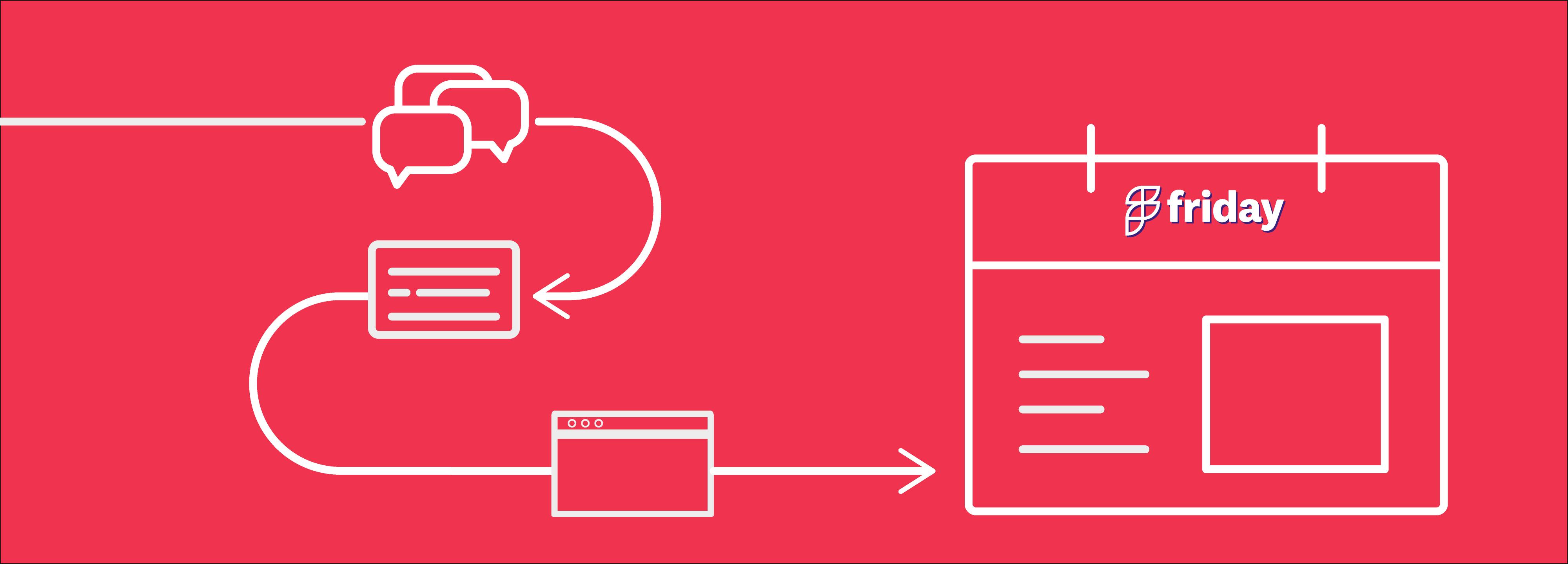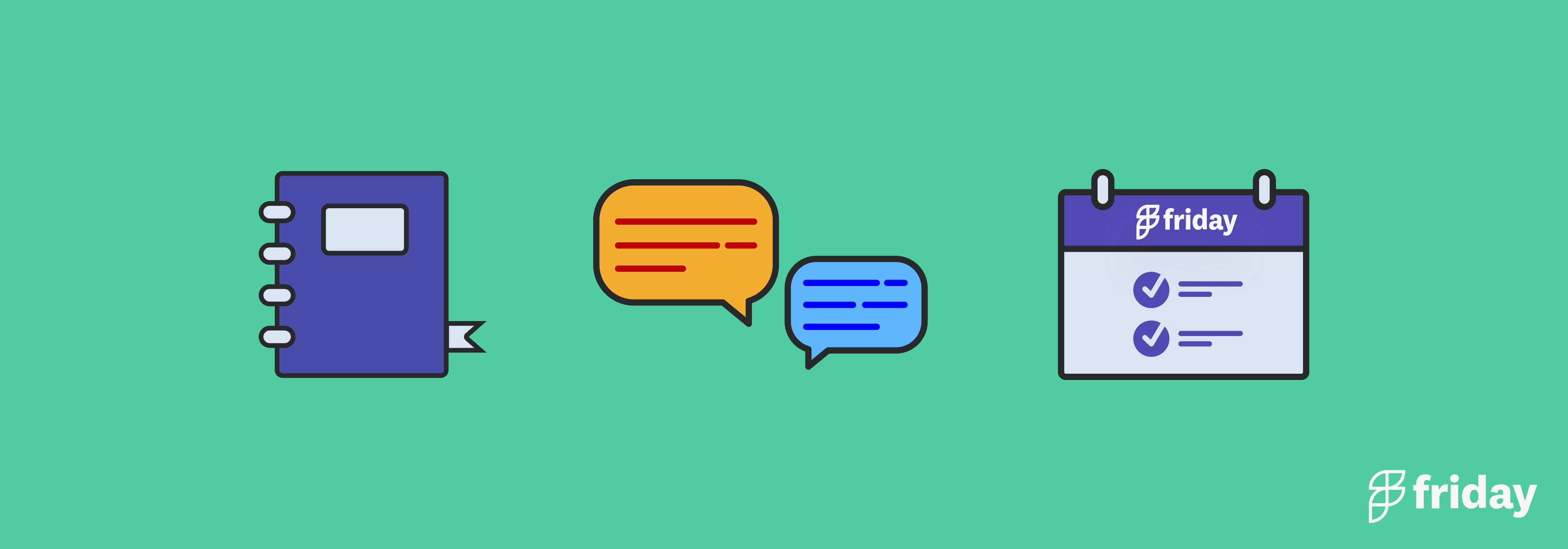2023 Planners: 12 Best Daily Planners (Personally Reviewed!)

How do you get more organized in 2023? You can invest in a new planner. We all want to track tasks, take notes, and plan our weeks and months.
But there are so many options and planner types! How do you choose? And what about digital and online daily planner apps?
First, let's get the online pick out of the way.
Here's our top pick for an online daily planner:
ClickUp
ClickUp is the ultimate productivity platform built to tackle everything from complex projects to your daily to-do's. Whether scheduling appointments, composing your grocery list, juggling assignments, or managing workflows, ClickUp offers a rich set of customizable features to organize tasks, take notes, time block, and more—making it one of the best free daily planner apps on the market.
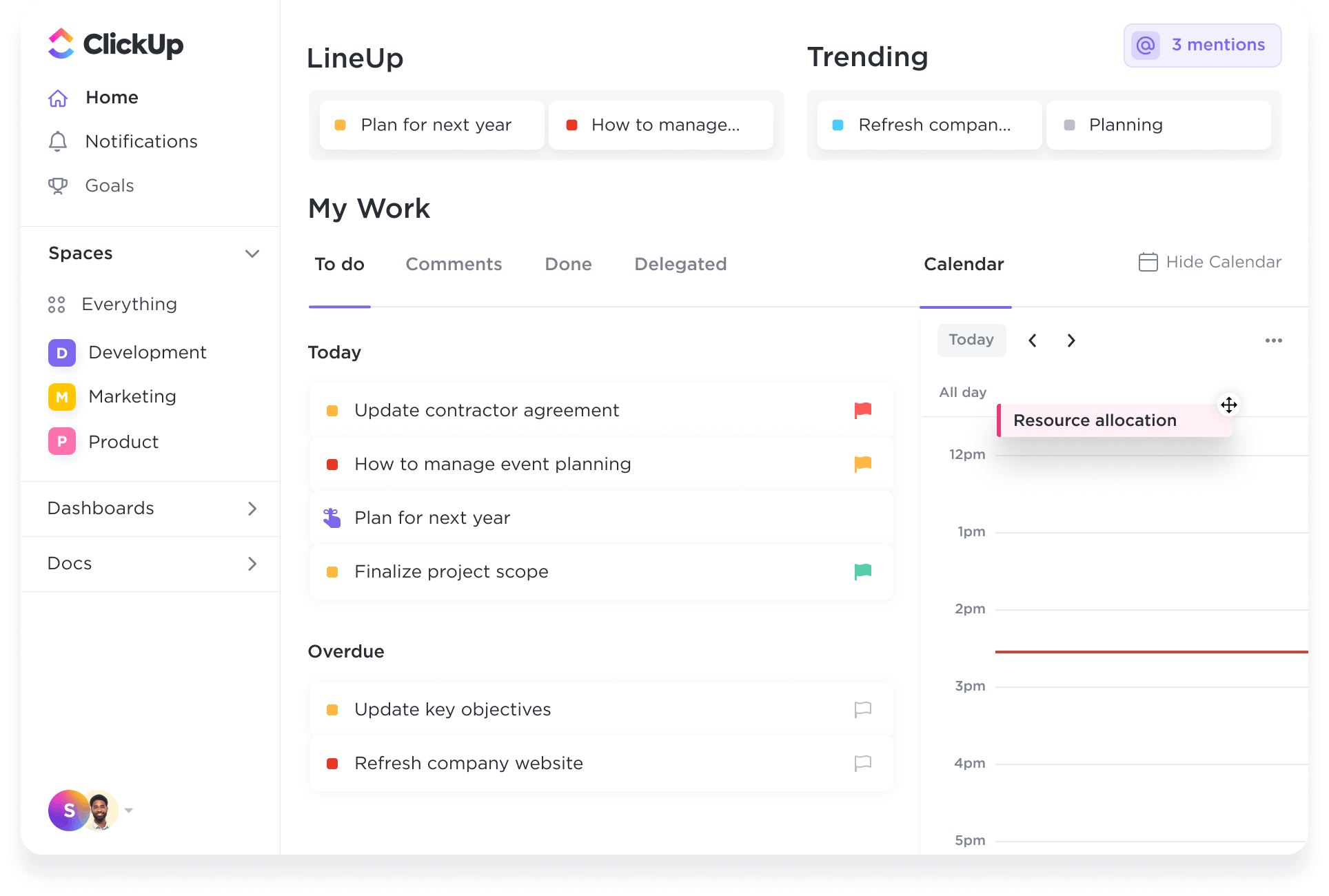
What makes ClickUp the ideal digital planner is its flexible organizational Hierarchy infrastructure for breaking down even your most daunting duties into manageable tasks, subtasks, and Checklists.
There are over 15 unique ways to visualize your work in ClickUp including Calendar, List, and Everything view to give you a high-level look at what you have planned ahead. Plus, your Home page in ClickUp syncs with your favorite calendar app to present all upcoming events conveniently alongside your tasks, reminders, and messages.
ClickUp also offers a vast library of pre-built templates to jumpstart your workflows, including a beginner-friendly Daily Planner template with custom statuses and work views to show you the ropes with it comes to creating recurring tasks and building productive habits in this powerful platform.
Best Features:
- Over 15 unique ways to visualize any workflow including List, Calendar, Everything view, and Home
- Collaborative ClickUp Docs for creating everything from simple checklists to beautifully formatted wikis
- Customizable tasks and subtasks to break down any action item
- Automations to save time on routine tasks
- Reminders that can be customized, delegated, snoozed, and repeated
Pricing:
- Free Forever: ClickUp Docs, Calendar view, tons of digital planner features, unlimited tasks, 100MB of storage, and more
- Unlimited ($5 per member, per month): Unlimited storage, unlimited integrations, unlimited Dashboards, Agile reporting, and more
- Business ($12 per member, per month): Google SSO, unlimited teams, custom exporting, advanced public sharing, advanced automations, and more
- Business Plus ($19 per member, per month): Subtasks in multiple Lists, custom role creation, custom permissions, increased automations and API, and more
Use ClickUp for free. No credit card required.
Here are the best paper planners for 2022:
Here are our recommendations for the best paper planners to use in 2022, which is ideal for work and studying (especially if you need to pass the FE Exam). They were personally reviewed (shipped to us and everything!) and picked by us for use in 2022. A few of the products listed below have affiliate links.
1. Action Day Timeboxing Planner/Journal
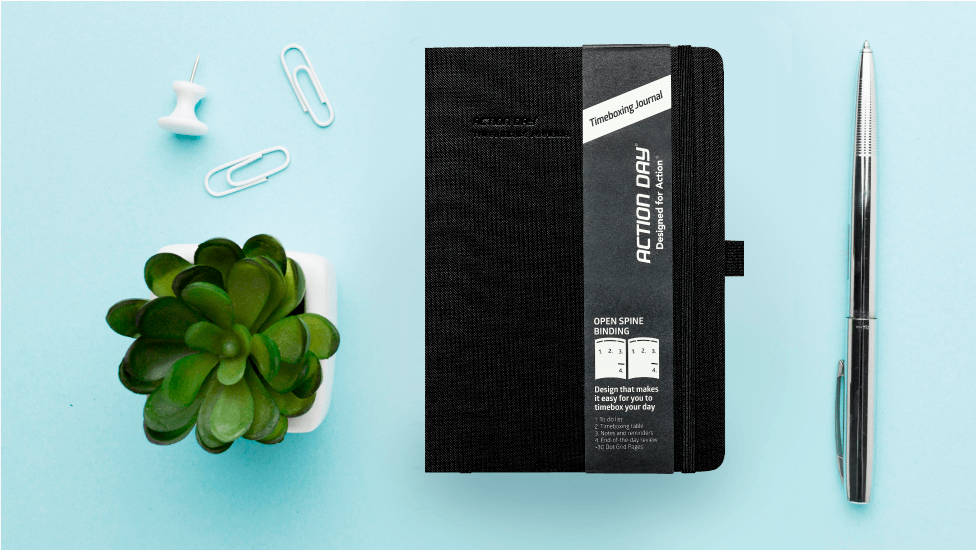
Recommended For:
- Timeboxing
- Highly communicative people in fields like sales or business development
This planner was specifically selected for its timeboxing element, which I’ll discuss soon.
However....
The most striking thing about this journal is the open spine binding that allows you to lay the journal flat and spread it out.
Beyond basic Instagrammable-ness, the 180 flat lay is insanely agreeable -- with writing and keeping it open on my desk. It’s not always trying to close.
The pages do not flop on top of the other pages. You can keep your to-do list and planner in front of you at all times.
Enough praises about binding. How does the journal actually perform?
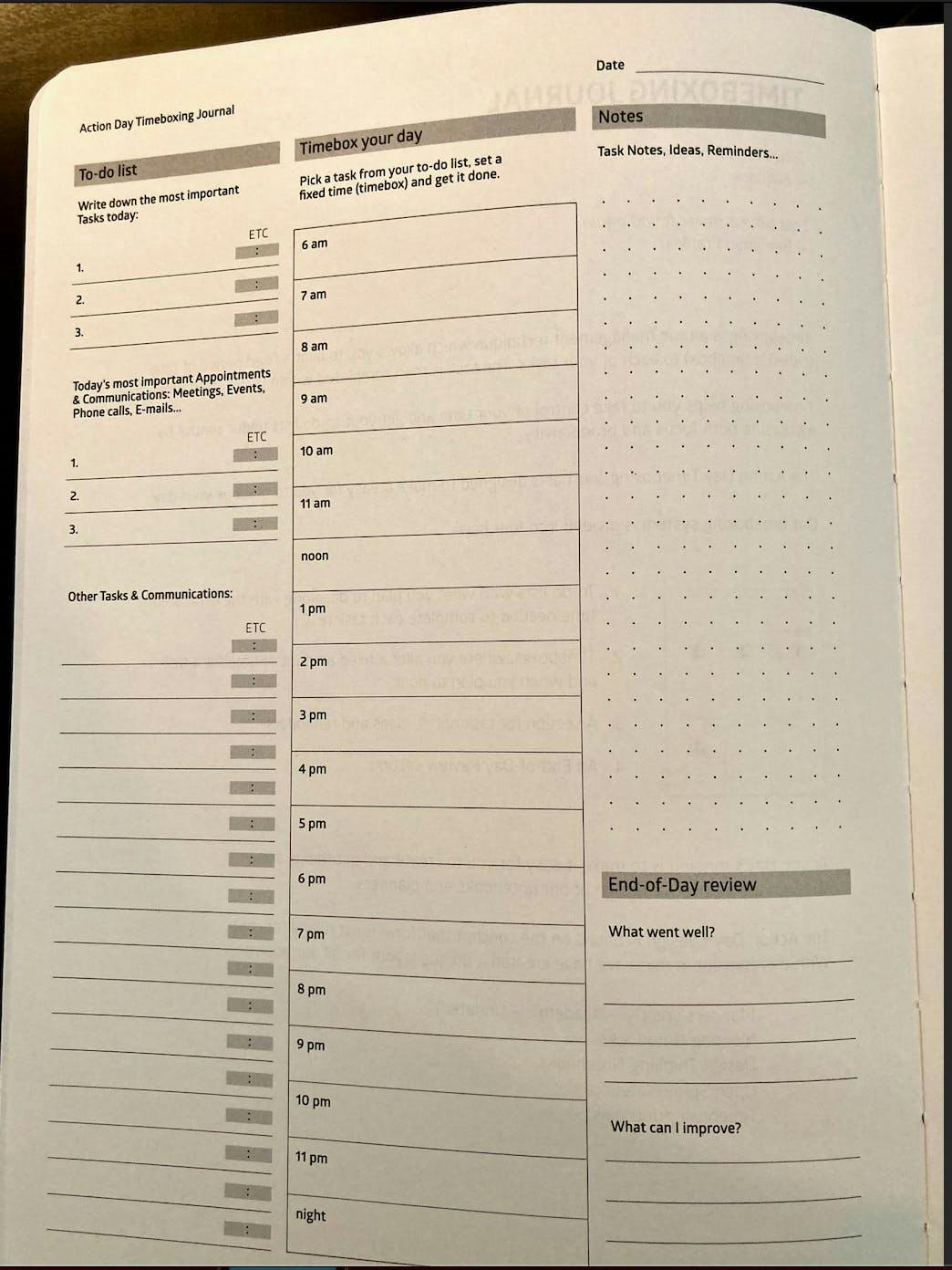
Planner Layout
The size is on the larger size: 7x9 inches. This format gives the Action Day journal lots of space, and each day gets its own page. This truly serves as a planner because now you have a central place for every day of the week.
I’d also opt for the undated version here because if you go on vacation or miss a day, you can still pick it up where you left off without any wasted pages.
The left side of the page begins with a to-do list. There is a prompt to write down your 3 most important tasks for the day, note down any important phone calls or emails you must send, and then list other phone calls, texts, or emails to make.
A highly communicative person -- sales, CEO, business development reps -- will enjoy this feature. List your key calls and then time block them into certain parts of the day, while also blocking off time for other appointments.
The timeboxing portion is in the center of the page and reads like a daily schedule or hourly planner.
The right side and third column is divided into 2 parts: Notes and an End-of-Day review.
The bottom End of Day Review asks 2 questions:
- What went well
- What can I improve?
This helps you reflect on your day and puts you in the right mindset for the next day.
Note: Friday offers a similar functionality with Check-ins--helping you reflect on your day, which you can use for yourself or with your team.
That is the meat of this planner. The end section has more ebullet journal pages which can be helpful if that is one of your preferred modes of notetaking.
The flexible backfolio pocket is also great for storing notes or any other random items you may need to track.
Best Features
- Open 180-degree flat lay
- Plenty of space for each day
- Well-organized timeboxing
- Grid sections for bullet journaling
- Reflection questions
Cons
- No weekly or monthly views
- Larger size may be inconvenient for some
- No blank pages or calendars
Size: 7 x 9 inches
Price: $27.99
2. Ink & Volt Goal Planner with Notes
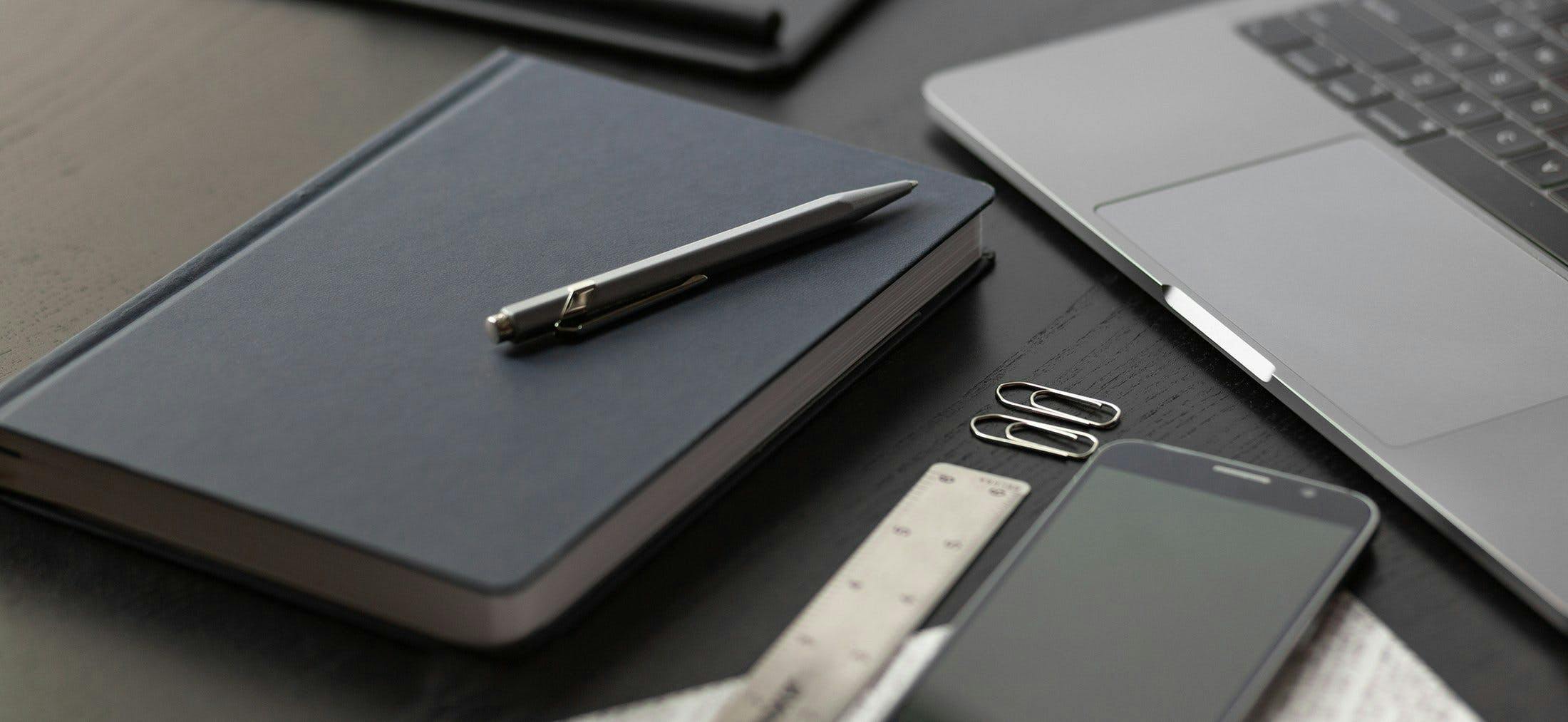
Recommended For:
- Reflection and weekly planning
- Ambitious people, but not micro-managers
This planner series was a Kickstarter by Kate Matsudaira, a former startup founder, who wanted to better organize her work.
So she started Ink&Volt.
The opening pages ask about what would be a perfect year, and what you want to start doing this year, and what do you want to keep doing. Ink & Volt asks a couple of big questions at the beginning about the year, but in a more compact way compared to the Clever Fox planner (see below).
This is a nice distillation of the Start, Stop, Keep framework -- one you can use in Friday as well.
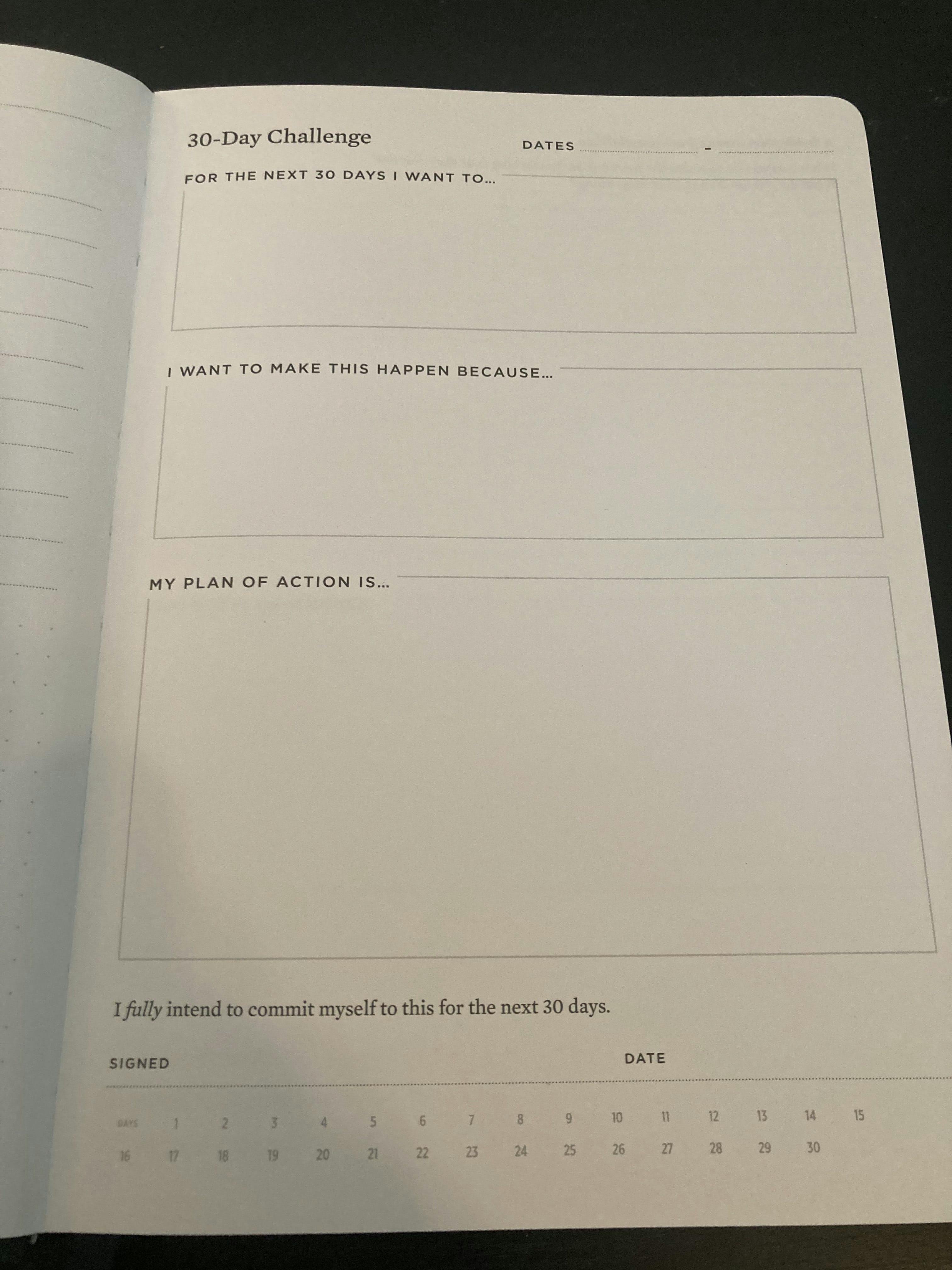
Planner Layout
The planning section opens with Monthly Goals, and a 30-Day Challenge, which for the product-minded could read as a sprint.
It’s goal setting plus it asks you to create a plan of action (There’s even a place to sign!)
From here, you jump into 5 straight weekly pages (enough to cover any month) with prompts to review your yearly and monthly goals.
I like this format more than sectioning off months and weeks separately, in this case they all flow together, just like in actual life.
Each day has its own column in a two-page spread, allowing enough room to do timeblocking or a dedicated schedule without forcing you into that format.
Small prompts for reflection appear at the end of each week to help you focus or prioritize. It accomplishes similar ground as the other big picture goal setting planners, but in a more subtle, freeform way.
Note: I reviewed the undated version, but the 2022 version is exactly the same.
Best Features:
- Convenient Size
- Sturdy paper
- Flow of monthly to weekly
- Lots of space for notes
Cons:
- Basically lays flat, but still opens like a book
- No stickers
- No timeblocking or daily schedule/hourly planning
- Focused on weekly goals rather than daily to-do lists
- 6 months in undated planner
Size: 6” x 8.5”
Price: $32.50
3. Best Self Co Journal & Planner
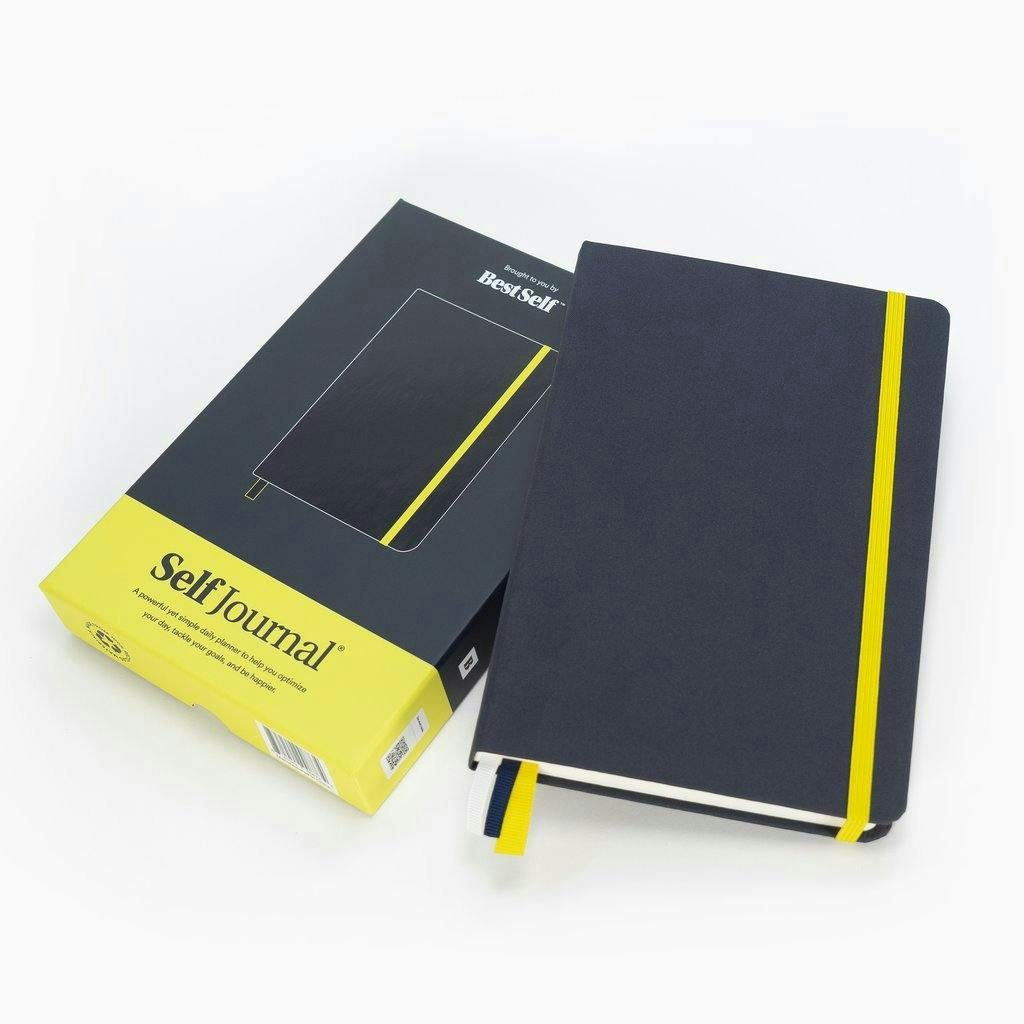
Recommended For:
- Goal-setters
- Tracking your success and failures
The Best Self Co is one of those planners that aims to bring the whole person together. It also remixes the traditional idea of journaling (long paragraphs about your day) into something more manageable—think of bullet points for how your day went and want you wan to do.
The Best Self Journal runs in 13-week sprints, with a listing of a bucket list for the next 13 weeks—what experience do you want to have? Who do you want to connect with? What about health and finances?
You rate yourself on a scale of 1 to 10 in several categories, and then map out how you will accomplish those things and how much time you will spend on each.
Thankfully, Best Self includes a guidebook in their packaging box (!) to walk you through the finer aspects of their guiding principles which is centered on consistency.
You can prioritize your most critical tasks, reflect, and then gauge your consistency towards the goal.
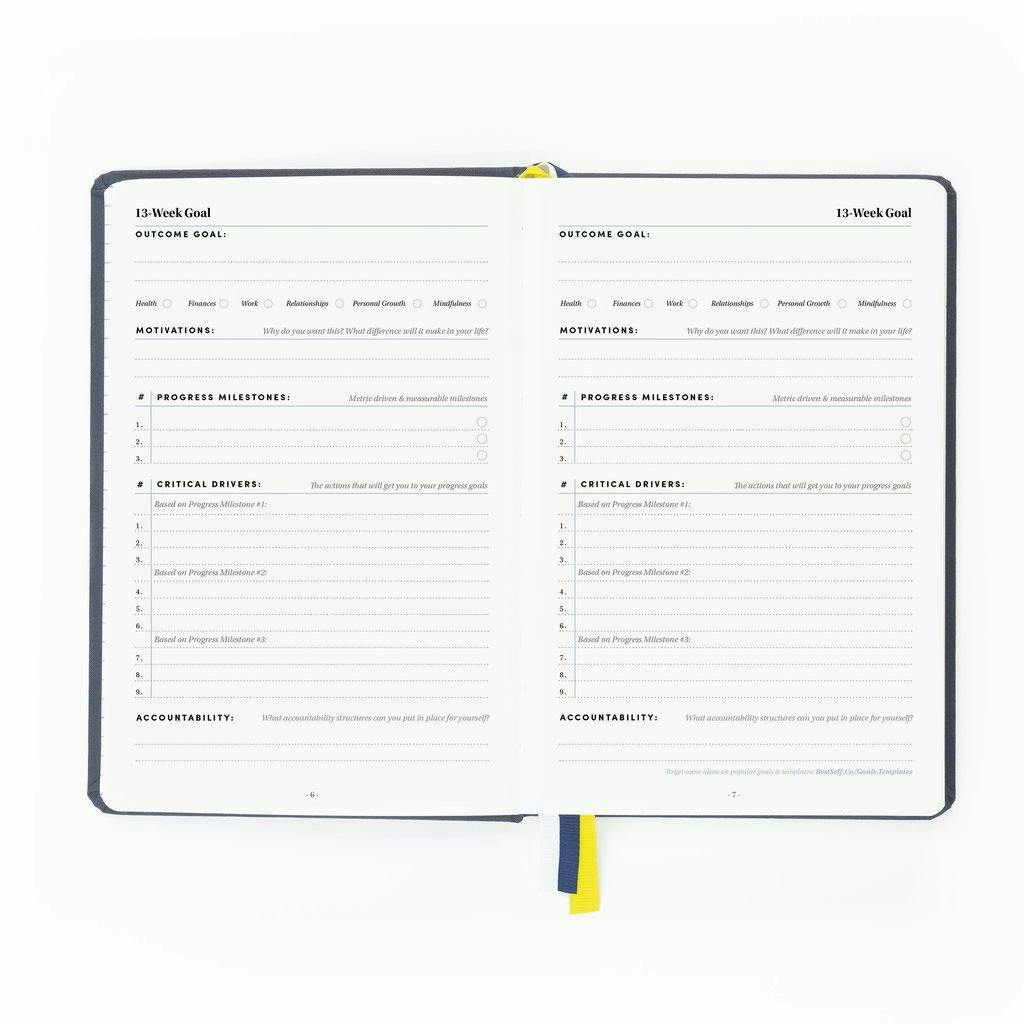
Planner Layout
The meat of the Best Self planner is the weekly planning section where ou add your objectives, and your big tasks for the day.
You can then flip to a daily planning. Section for your main goals and a time boxing planner with a dotted journal notebook too.
The drawbacks is that each journal is only 13 weeks long, which encourages you to upgrade or gives you an easy out if the Best Self isn’t for you.
If you’re looking for a casual planner, this isn’t for you—opening Best Self feels like a commitment. If you’re not ready for that, choose another one on this list.
The end includes a reflection section on the past 13 weeks helping you recalibrate on what worked and what didn’t.
Note: Best Self has a more traditional planner that may be worth checking out, too!
Best Features
- Convenient size
- Easy flat lay
- Daily time boxing
- Reflection questions on your progress
- Self-assessments in key areas
- Habit trackers
Cons:
- Only 13 weeks
- Potentially overwhelming
- Separate monthly, weekly, daily sections
Size: 7" x 10"
Price: $31.99
4. Field Notes 56 Week Planner

Recommended For:
- Quick notes & ideas
- Punctual, yet witty people open to spontaneity
Field Notes is a well-respected and cheeky brand, made with a vintage style in mind to pay respect to old memo and notebooks. Think Americana.
Created by a Chicago design firm, they are known for their distinctive brown cardboard covers and spiral binding. They’ve partnered with such well-known American brands like Levi’s, Starbucks, Nixon, Loot Crate and J. Crew.
Carrying a Field Notes planner makes a statement about the type of planner and organizer that you are. With Field Notes, you are a punctual person but open to spontaneity.
To wit: There are jokes on the front and back pages that gently pokes at the well-worn genre of goal-setting and self-help.
Some of their self-improvement keys listed on the inside of the front cover are to “buy more field notes” and “don’t trust anyone over 30.”
A Note to Self also listed in the front suggests to keep your Field Notes “hidden from snoops.”
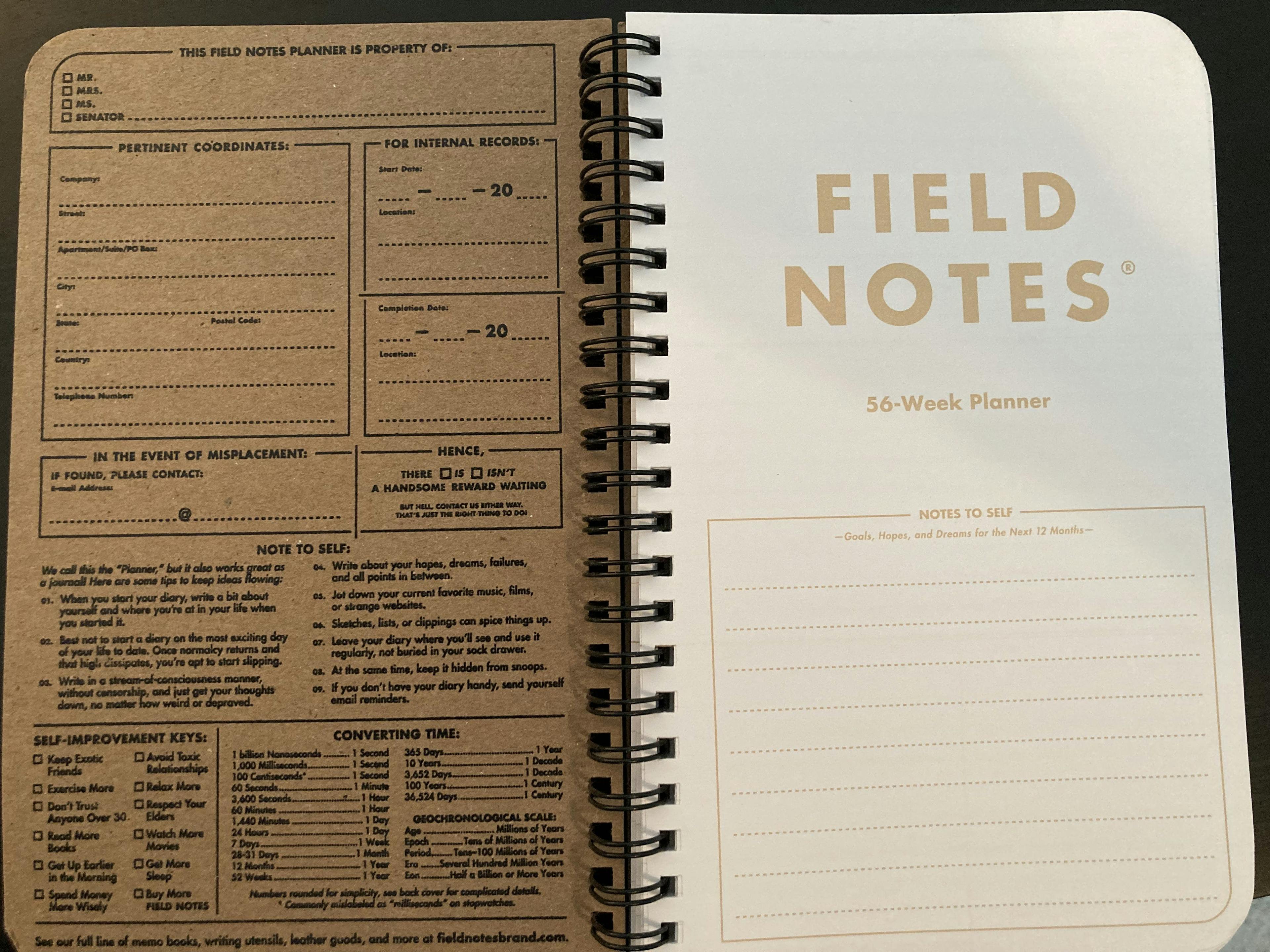
Planner Layout
But what about the planner itself? It’s a comfortable size to transport, slightly larger than a pocket size. The cardboard and spiral binding make it very durable. It’s easy to take with you; it’s easy to flip pages.
Inside, there is no hourly schedule, instead each day has its own block. You can write notes, ideas, or appointments within it. Each week is its own open, 2-page spread.
With Field Notes, there are no fancy planner stickers or organization systems. Just write tthe month at the top and flip the page. It’s undated pages let you start at any time.
If you only have a few appointments or events per day, then this Field Notes planner could be right for you.
Best Features:
- Convenient size 4.75” x 7.5”
- Spiral bound
- Undated
- Inexpensive
- Open spaces
Cons:
- No calendar
- No time slots
- No built-in organization
Size: 4.75” x 7.5”
Price: $14.95
5. SMART Planner Pro
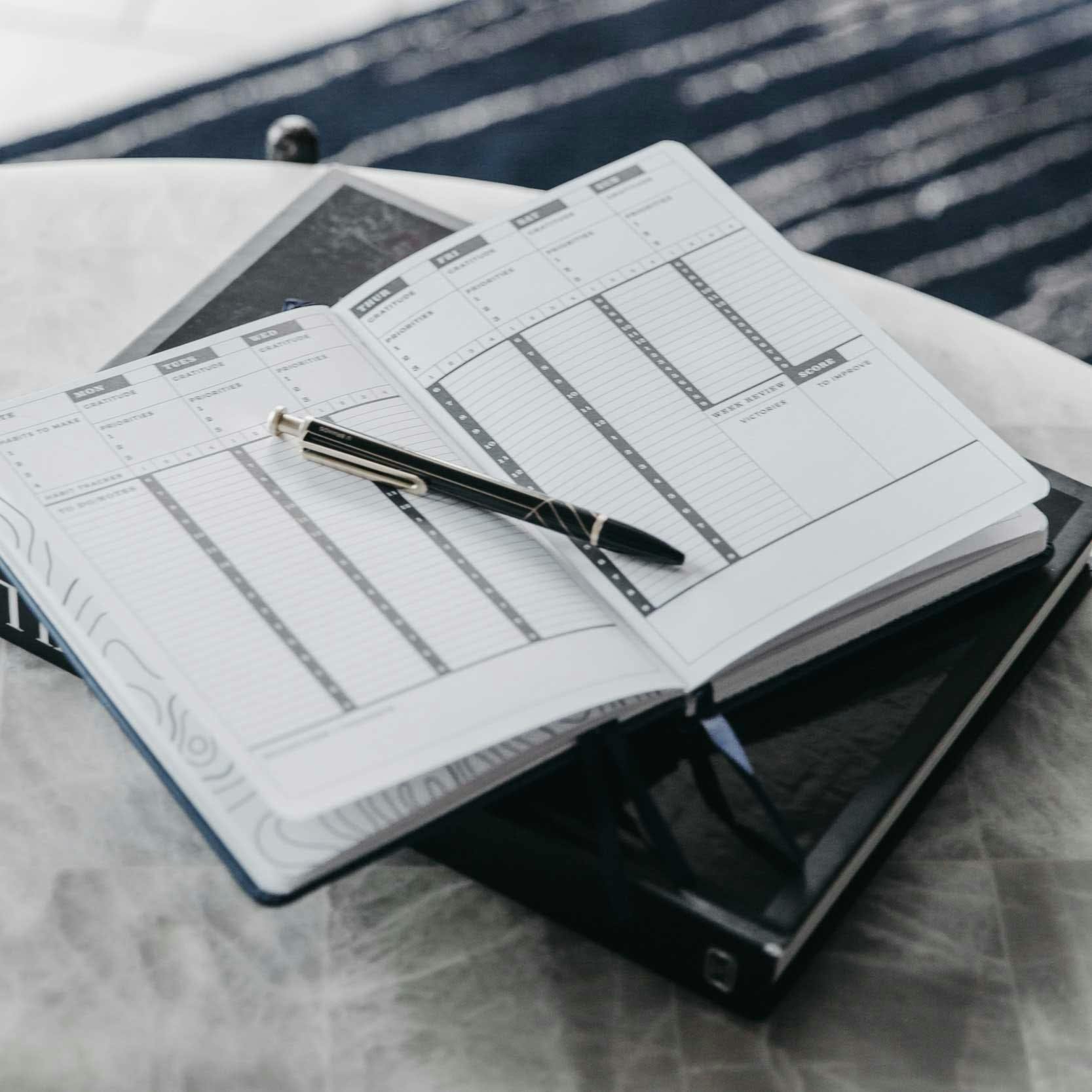
Recommended For:
- Making detailed plans & habit tracking
- The uber-organized
Whereas other planners like Field Notes or JSTORY emphasize simplicity, the SMART Planner emphasizes organization with an obsessive amount of detail.
If you’re new to the planner world, you’ll be surprised by the amount of stickers. Several brands I’ve reviewed have several stacks of planner stickers. The SMART Planner is one of those.
You can use stickers for…
- Days off in specific months (For instance, February has its own color-coded days off and meeting stickers)
- Birthdays, trips (in the form of airplanes), conversations, cleaning days
- Holidays such as a Christmas tree or pumpkin for Halloween
I can see how the uber-organized would like these small touches.
The size is reminiscent of a paperback book, but one with a harder cover. The planner also opens like a regular book, and I repeatedly found myself trying to crack the spine and bend it down.
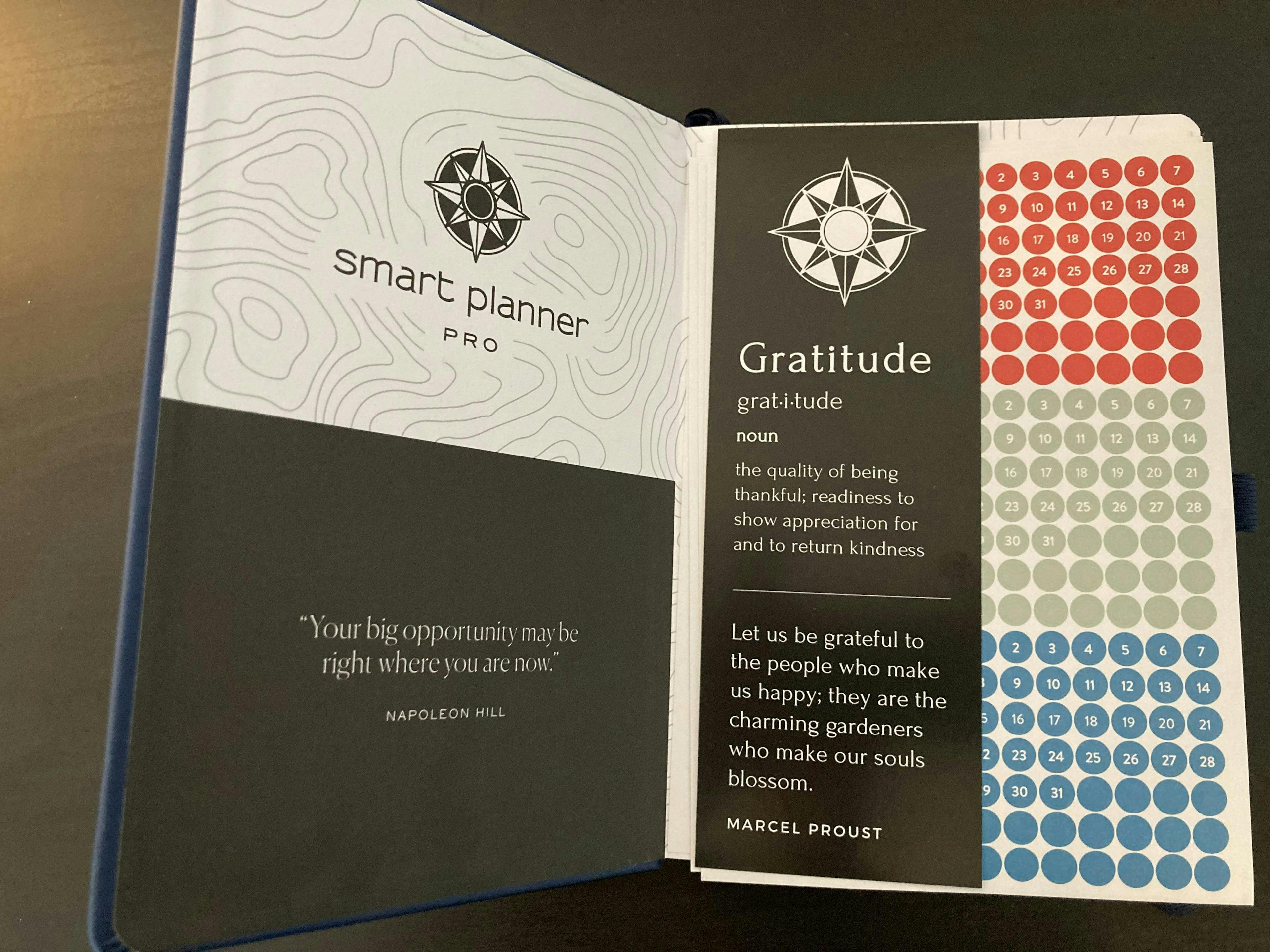
Planner Layout
The SMART Planner is divided into 3 sections:
- Monthly
- Weekly
- Notes section
All of the months are together, so you flip over to the weekly section to actually plan your week--while the monthly section gives you a big picture overview.
Bookmarks (and stickers!) help you go between the sections.
Once inside, the weekly layout is great and it is my favorite part.
It utilizes a column-style for each day of the week--with time slots for each day. So it’s easy to see what you did on Monday and then drag that over to Tuesday if needed.
Even though the weekly planner section is quite detailed with hourly time slots, there is not a lot of space for those notes. You can flip to the back for another section to record notes. The bookmarks help you do this.
Under each day in the weekly section, there is a small block for gratitude, top priorities for the day, a scheduler with appointment slots and then habits to focus on for the week.
From that perspective, it’s very comprehensive to help you list your priorities and habits.
On Sundays (Mon-Sun format) it has a weekly review box with “victories” and where to improve.
Note: Friday does this as well, with the option in the daily planner to let you rate your day, set goals, and to rate how productive you were.
I’m not sure what the “SCORE” refers to—maybe it’s a self-evaluation tool to help you rate your performance/productivity on whatever personal scale that you’re using.
The final section is for “Notes & Brainstorm” with lined and unlined pages to help you quickly write down notes and ideas.
Best Features
- Helpful weekly layout
- Hardback but soft cover
- Bookmarks and the detailed weekly planner section
- Column view makes it easy to compare days
- Nice back pocket to keep stickers or other notes
Cons
- Needs a user manual or a few other instructions
- How do you feel about stickers? Seems like a personal preference.
- Binding is stiff
Price: $24.97-$25.97
6. Clever Fox Weekly Pro Planner
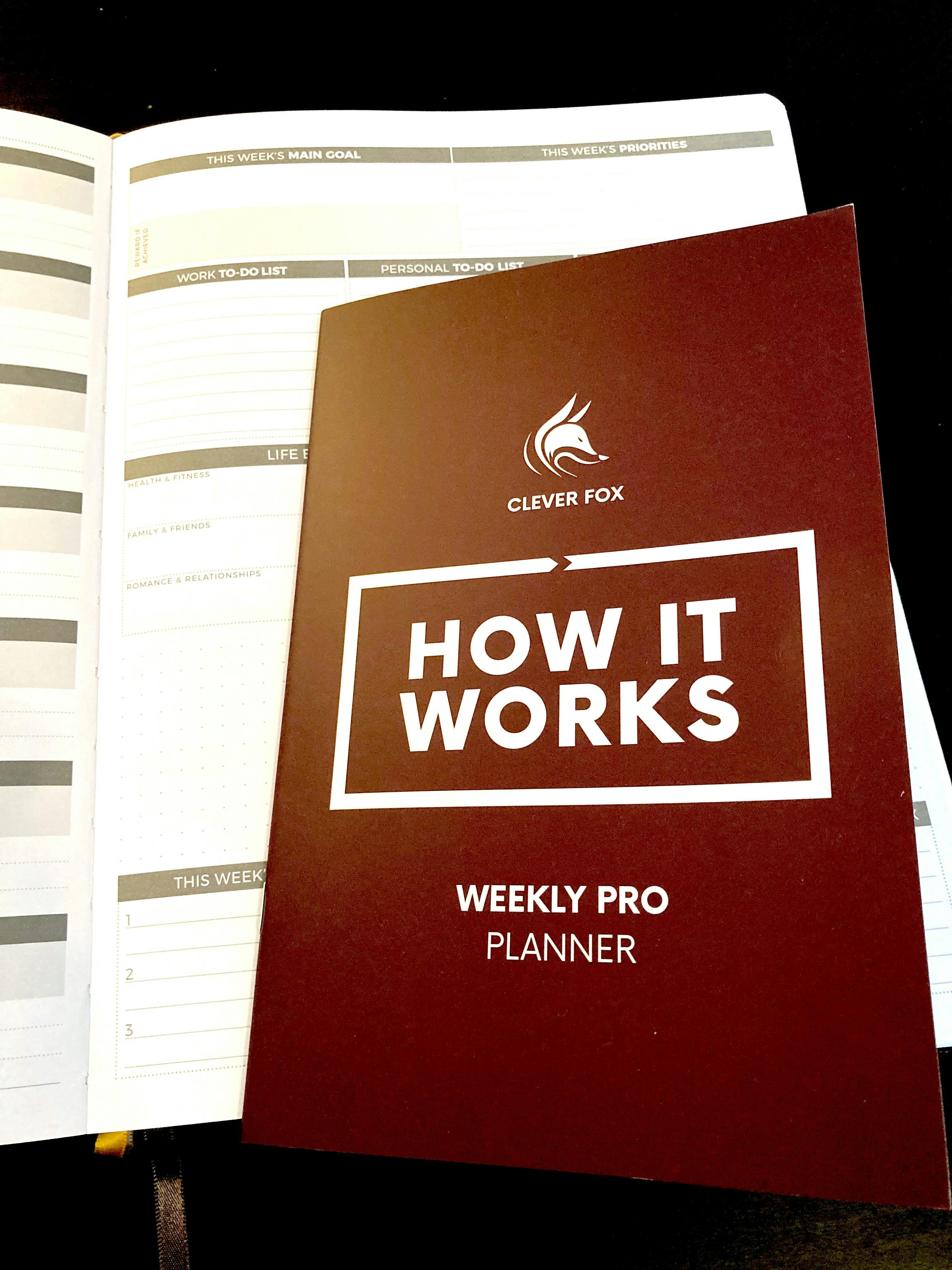
Recommended For:
- Mapping goals
- People that desire reflection & self-improvement
If you want to re-evaluate your life, set goals for yourself and be productive while doing it all in a paper format, consider Clever Fox. Very few of the planners reviewed here are as comprehensive in merging work and personal life like this.
It begins with an Awareness and Self-Discovery section to aid you in mapping and reflecting on your personal goals, mission statements, and daily rituals.
The daily rituals include gratitude, personal reminders, and affirmations (which as personal mantras seem to be growing in popularity in planners).
Their prompts help you focus on these core areas of your life, or to think about them for the first time in a long time.
Also included is a vision board--or vision paper, rather. The handbook (yes, there’s an instruction manual) says to “cut out images and words from magazines, doodle or simply write down some thoughts about where you want to go in life.”
Goals
After the vision board, there is a very encouraging/convicting section entitled “What Do I Want My Life To Be Like.”
It contains columns for 1 year from now, 5 years, 10 years, and 20 years. Mercifully it stops at that point.
Jokes aside, this is a fruitful exercise, and I understand why this goal section is valuable. It’s worthwhile even if you don’t hold onto the Clever Fox forever.
What follows is another goal section, but more concrete than the first. It focuses on 1 year and then 3-month goals--including areas for relationships, spiritual, and fun & recreation. If you want to start a new hobby, get out more, or have a savings goal, this is the place to put it.
Monthly Section
In the monthly section, you arrive at some of the more tangible aspects that we think of a planner for-- and still focussed on goal-setting. Their monthly review includes questions about your biggest wins, tasks that were not accomplished, lessons learned, and any particular areas that were elackign. In this regard, it operates as a diary/planner--albeit a focused one.
It then opens into a calendar, and stickers can be utilized to add days of the weeks annd to mark important datees, or to check off accomplishments.
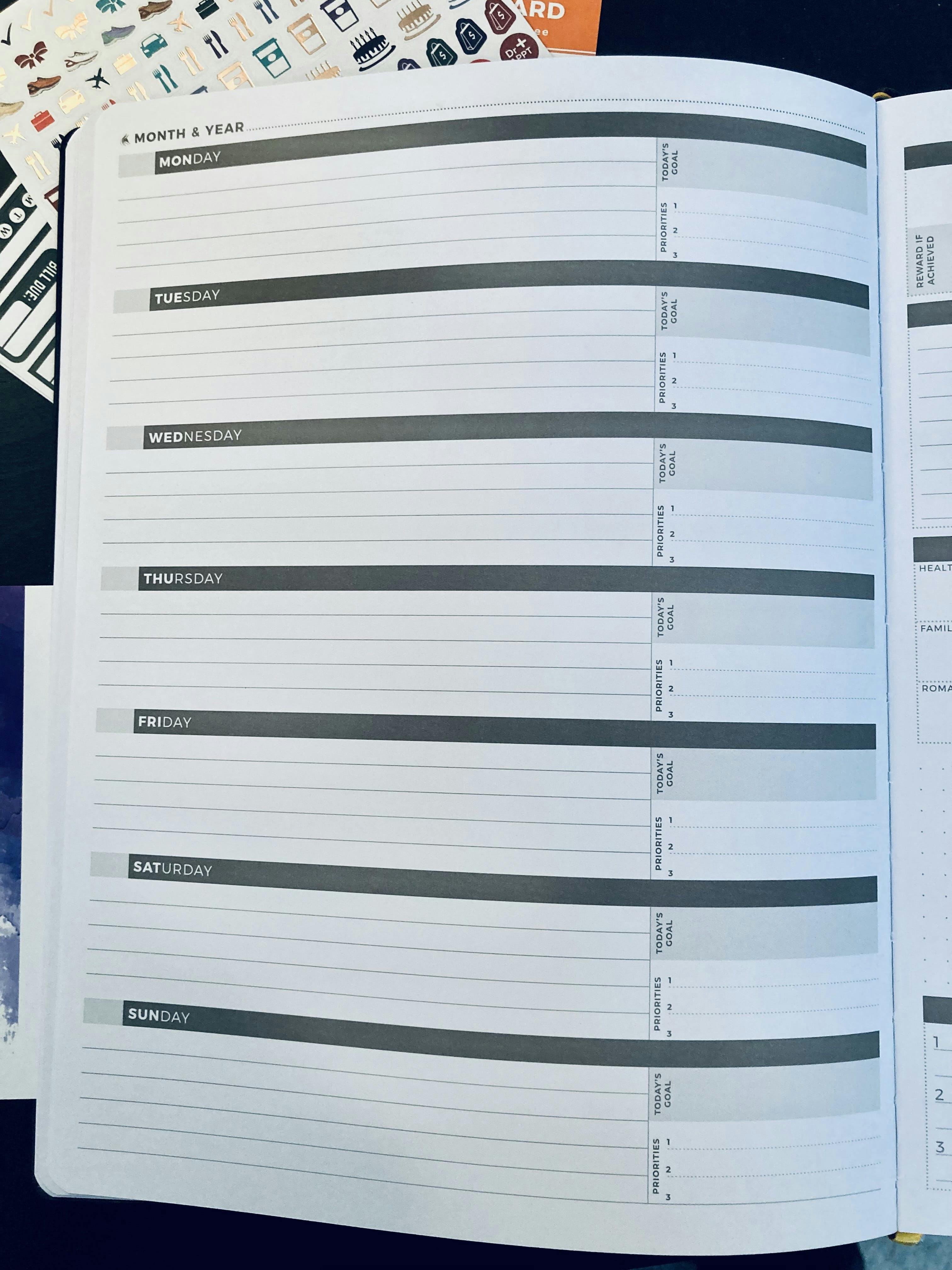
Weekly Section
You’ll need a bookmark to flip to a separate weekly section, where each week has its own 2 page spread.
The days aren’t highly detailed with hourly time slots. Nor do they have much space for a dailly to-do list. If you need room for an extensive to-do list, you’ll need to find another planner. The Clever Fox Daily Planners may solve a few of my issues with this edition.
There is more room for reflecting on your work/life balance, wins each week, and a habit tracker for each day. The last section are blank grid pages to write, take notes, or to use in conjunction with bullet journaling.
If you’re looking for a hardcore productivity planner, I don’t think I’d recommend the Clever Fox. It has those elements, but with a dash of self-improvement and personal focus.
Best Features:
- Contemplative life goal questions
- Reflections on progress
- Habit tracker
- Lays flat
- Sticker system
Cons:
- Lack of space for everyday task lists
- No daily schedule hourly slots
- Very large format and heavier than most
Size: 8.5 x 11
Price: $38.49
7. Panda Planner
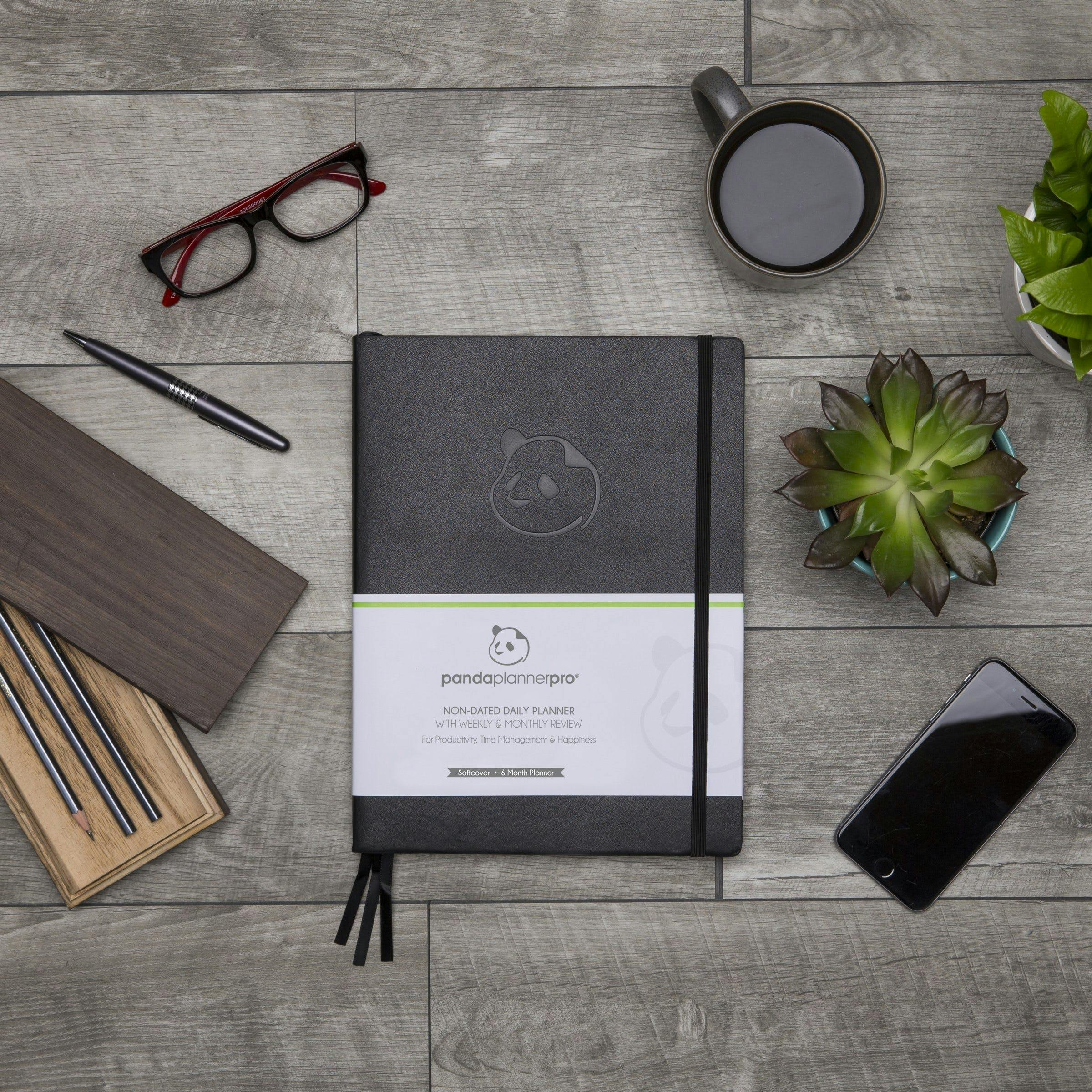
Recommended For:
- Lots of space for each day
- People who want to journal but don’t have time
Michael Leip started Panda Planner as a reliable system to help him address depression and anxiety, while still getting some work done. He states that the Panda Planner has “cut out everything you don't need and left only the most important elements that will give you the best results in the shortest amount of time.”
To that end, he has succeeded. The Panda Planner is compact and very intuitive. It’s not wordy, and the user design feels intuitive (though the font is slightly difficult to read for my tastes).
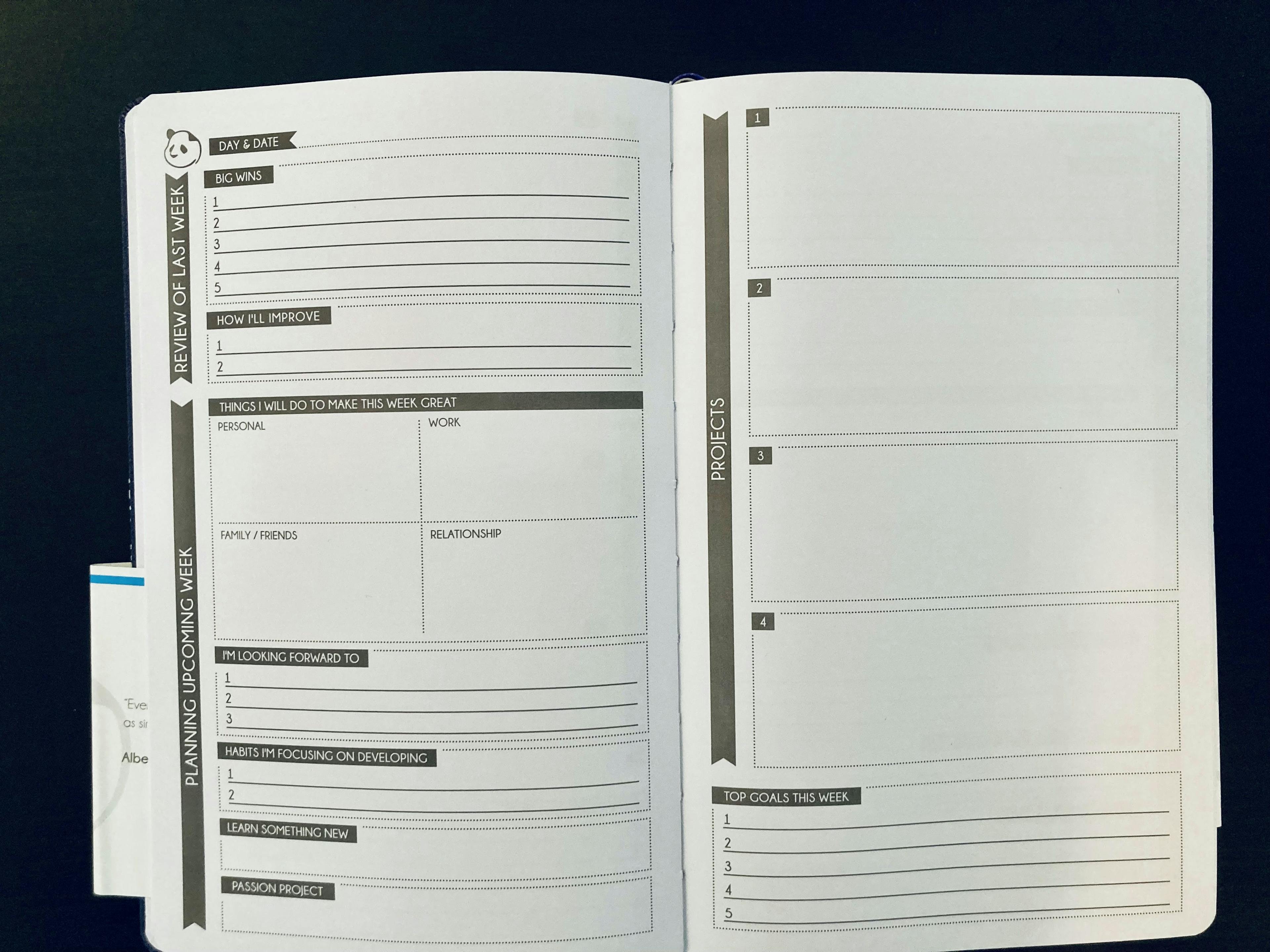
Planner Layout
As a daily planner, the Panda Palnner makes a ton of sense. Each day has a Morning Review that isn’t too overwhelming--it asks about what you’re grateful for and what you’re excited about.
Then there are small blocks for affirmation, focus, exercise, with a priorites (to-do list) with 5 reasonable items. There’s also a task list on the other side of the layout with a daily schedule block.
At the end of the daily spread, there’s a review for Today’s Wins and how to improve.
The Weekly Planner leaves a bit to be desired. It’s more of a weekly overview that doesn’t quite flow with the daily planner parts. You’ll have to use the bookmarks to flip back and forth. I do like the large weekly project section which helps to manage any large responsibilities that you have.
Best Features:
- Hardback cover
- Morning review section
- Review of last week
- Focused habits for each month or week
Cons:
- Separate monthly, weekly and daily sections
- 90-day planner
Size: 5.25” x 8.25”
Cost: $24.97
8. Large Weekly Planner from JSTORY

Recommended For:
- Doing one or two things each day
- People who like uncomplicated things
The name says it all in this planner from JSTORY. They have a range of planners including, medium, large, and big weekly planners.
And what they advertise is what you get. This weekly planner has a large foldable layout with great big letters to represent each day.
You fill in the dates and add any notes or ideas that you’d like.
It’s totally blank and undirected, allowing you to write out whatever you want for each day.
Each page is a week. And the planner is bendable and slim, so it fits easily in a backpack or case.
Their Plan grid planner has more room for notes.
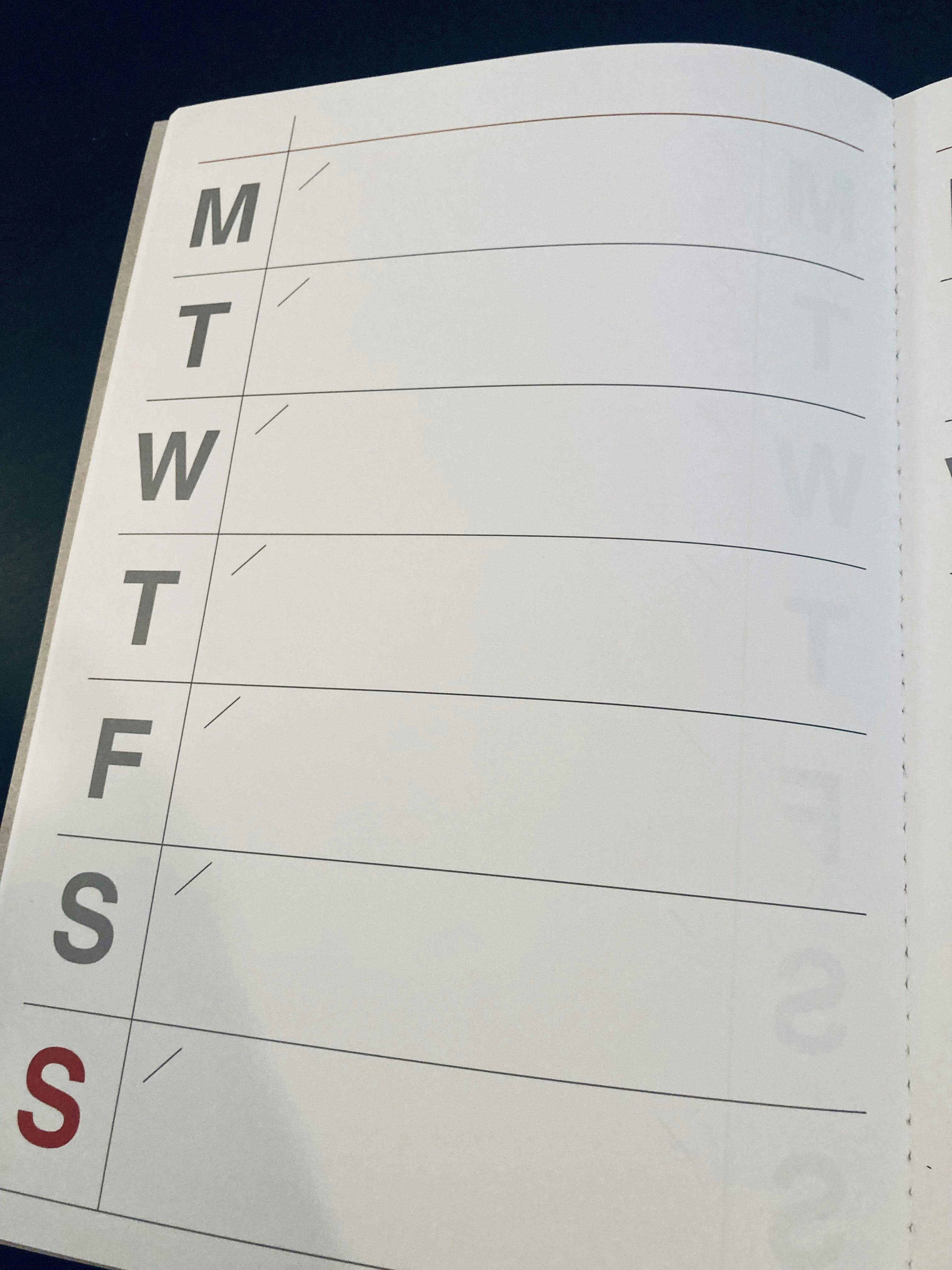
Best Features:
- Inexpensive
- Bold look & size
- Simple
- Straight forward
Cons:
- No extra space for writing or note-taking
- Each day is undirected--no time slots or calendaring
- No reflection or goal-setting
Size: 7.2” x 10.1
Price: $15.00
9. Lemome Planner 2022
Recommended For:
- Inexpensive tastes
- People who like tradition
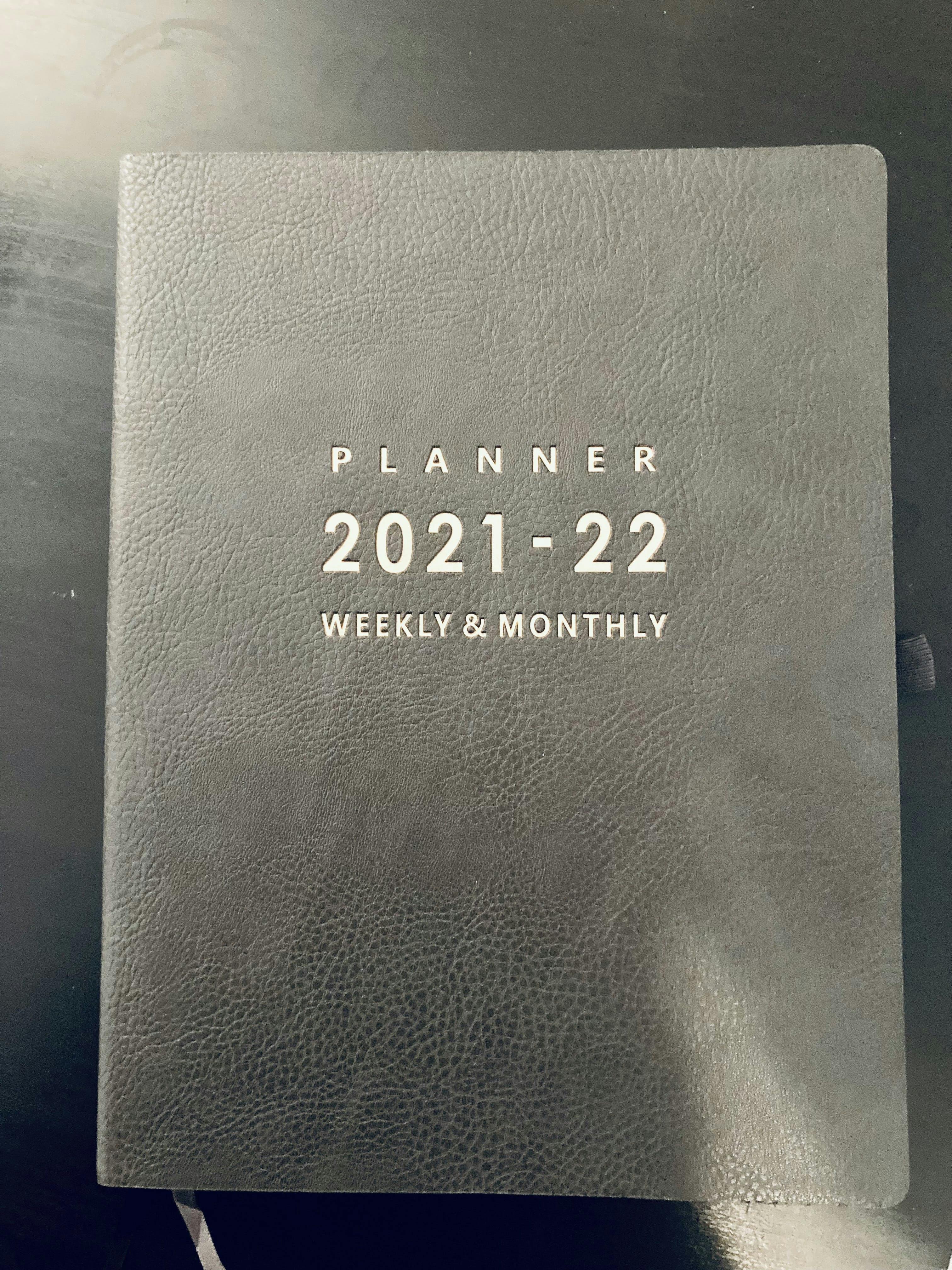
This planner has a wide layout and format, and each week is two pages of the layout. The dated format helps you with holidays and organizing your week. Much like the other planners, it has a note-taking section in the back.
There’s not a lot of guidance here and it displays much like a traditional planner.
Each day is its own block of lines without any schedule or formatted to-do list. The month view shows what day of the year it is and how many days are left.
For instance, May 23, 2022 is day 143 with 222 days left. I haven’t seen this in too many other planners, and it can be motivation as you’re planning out the rest of the year.
It’s a bit old school because it has a spread for contacts too in case you need to jot those down quickly.
For those who want a very traditional planner, this would be a good choice, though its large size and lack of personality may be a turn off for some.
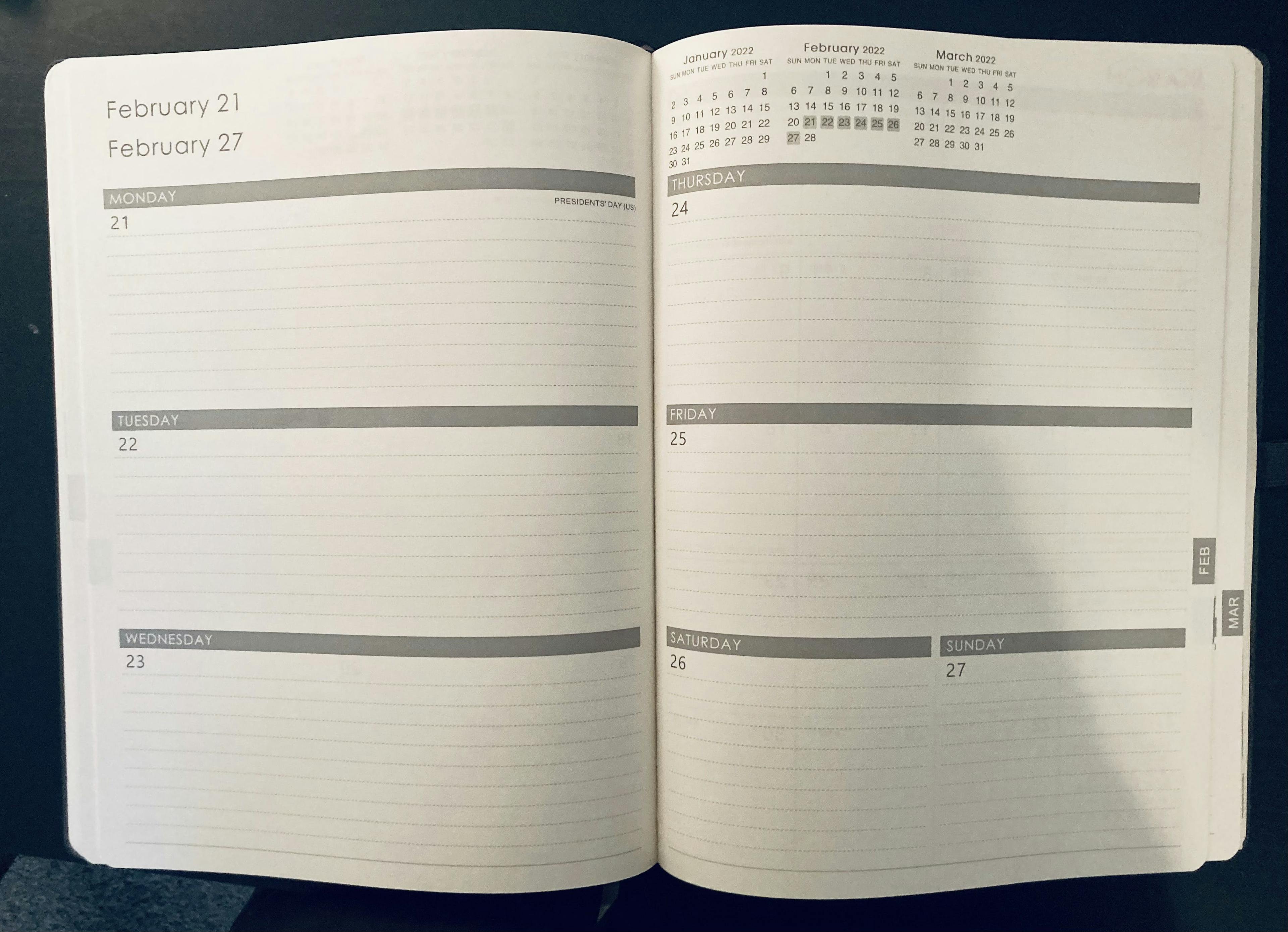
Best Features:
- Wide format
- Flexible binding
- Lots of space each day
- Reasonable price
Cons:
- Very traditional
- No schedule or time slots
- No goal-setting
Size: 8.5 x 11”
Price: $14.59
10. Moleskine Weekly Planner 2022
Recommended For:
- Feeling fancy
- People that like to travel
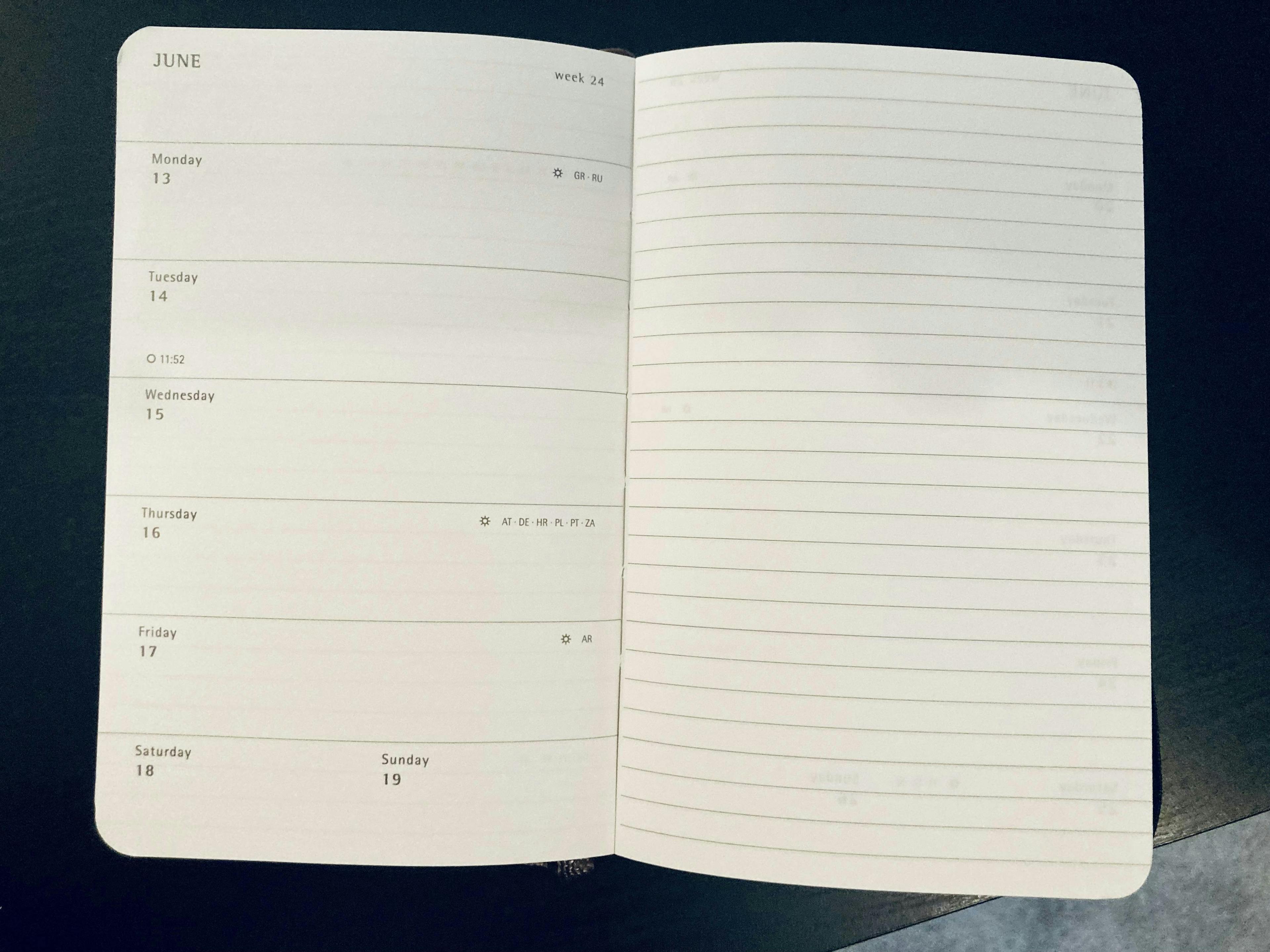
The pocket-sized planner has the same cover and paper feel as the Moleskine notebooks. It feels smooth, it's foldable, and easy to turn the pages.
On the fun side: This planner has a lot of interesting travel information. There’s a time zone converter map, measurements and conversions, and even a clothing chart with the comparable sizes for different countries. (For instance, a 6-8 women’s jeans in the USA is a size 29 in Great Britain. Thanks Moleskine.)
There’s also country codes from when dialing into other countries, along with travel dates and itineraries. You can also fill in a global map pinpointing your adventures. One page even has a small ruler on it!
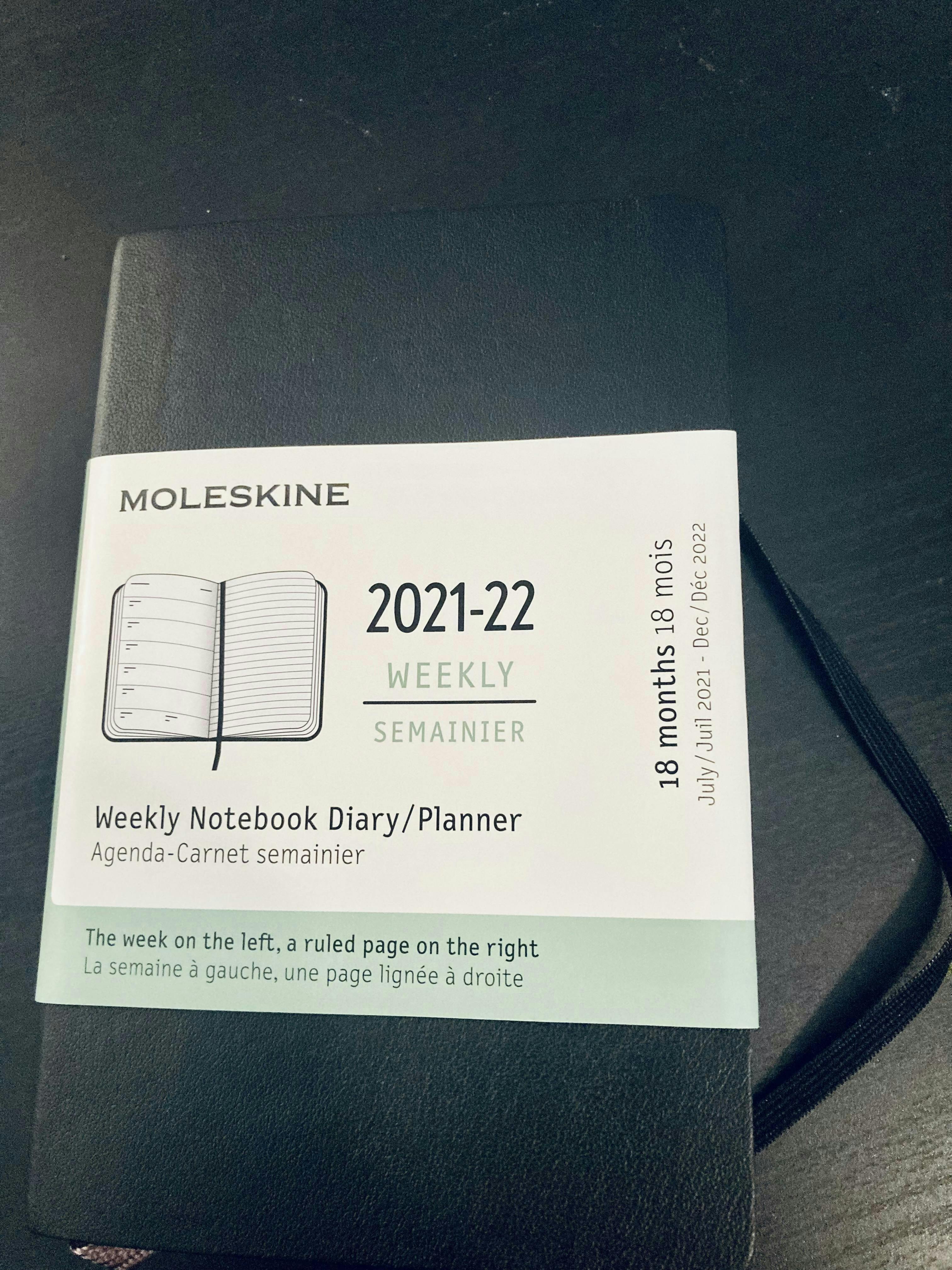
Planner Format
The weekly planner provides a small block for each day, with the date and a lined page on the other side of the layout to take notes for that week. That’s very handy in case you run out of space in one day--I’m surprised more planners don’t utilize this technique. There is no daily schedule or appointment blocks.
Best Features:
- Useful for travelers
- Small pocket size
- Note pages opposite each week
Cons:
- No goal setting
- Small monthly views
Size: 3.5” x 5.5”
Price: $19.95
11. Leuchtturm1917 Academic Week Planner
Recommended For:
- Efficiency and a back-up planner
- People on the go
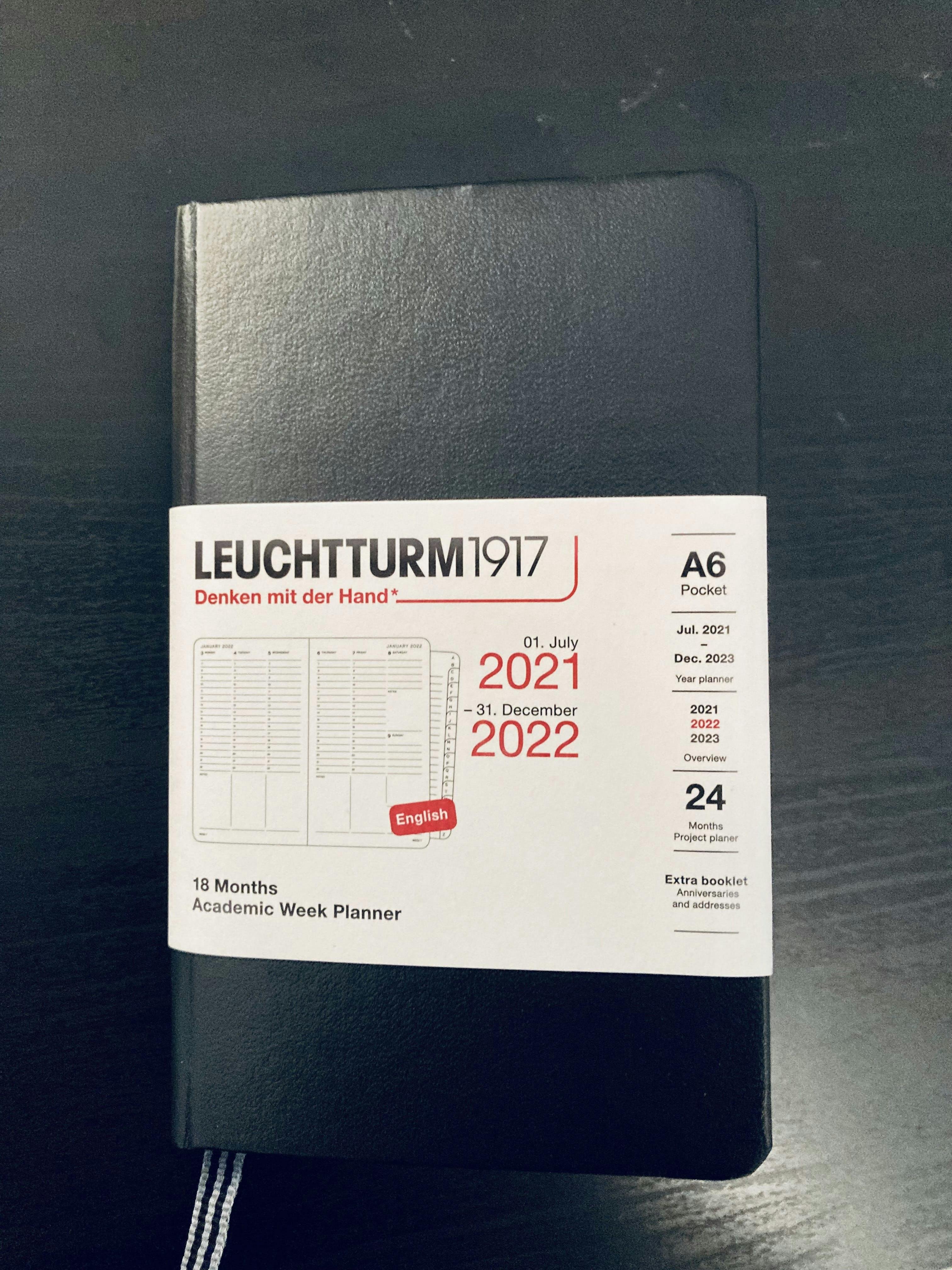
Moleskine and Leuchtturm exist in a similar space in my brain, which is probably my own naivety more than anything else. Still, these two planners seem similar--in size, look, and layout.
If you’re comparing the two, the paper in Moleskine stil seems superior to me, more silky.
However, the iconic German planner and notebook has some unique planning aspects that Moleskine and the others do not have. It starts with a small monthly calendar, in which instead of the traditional calendar squares, each month is a column on the page with the days underneath. You can add travel plans or holidays onto this monthly view without it taking much room. This is an efficient layout that isn’t used often.
It also has a dated Project Plan, which allows you to either refer back to the larger weekly section views, or to plan duration of a project--like a written Gantt chart. This is a staple of project management but is rarely seen in planners like this.
Once you reach the weekly section, each week is in a two-page spread, and each day has its own agenda and schedule in an hourly planner for precision with your appointments and schedule.
Underneath each day is a small section for notes, which functions as a catch-all for to-do lists or extra ideas.
A small very simple address book is also included, which seems too quaint to be functional. It’s not long enough to have much meaning, nor does it seem to have durability.
Everything about the Leuchttrum1917 seems to be a second option--use it if your main planner isn’t available or if you need something on the go. I only see super planners doing that, but there are many highly organized people that may find it valuable.
I reviewed the A6 pocket edition, and the other formats would provide more room for note-taking which may be more ideal for intense use.
Best Features:
- Compact monthly overview and project planner
- Daily agenda and schedule
- Thorough calendar overview
Cons:
- Small size for appointments
Size: A6, 4-1/8 x 5-⅞”
Price: $18.50
12. Erin Condren Softbound Monthly Planner
Recommended For:
- Style with functionality
- People that want multiple cover options
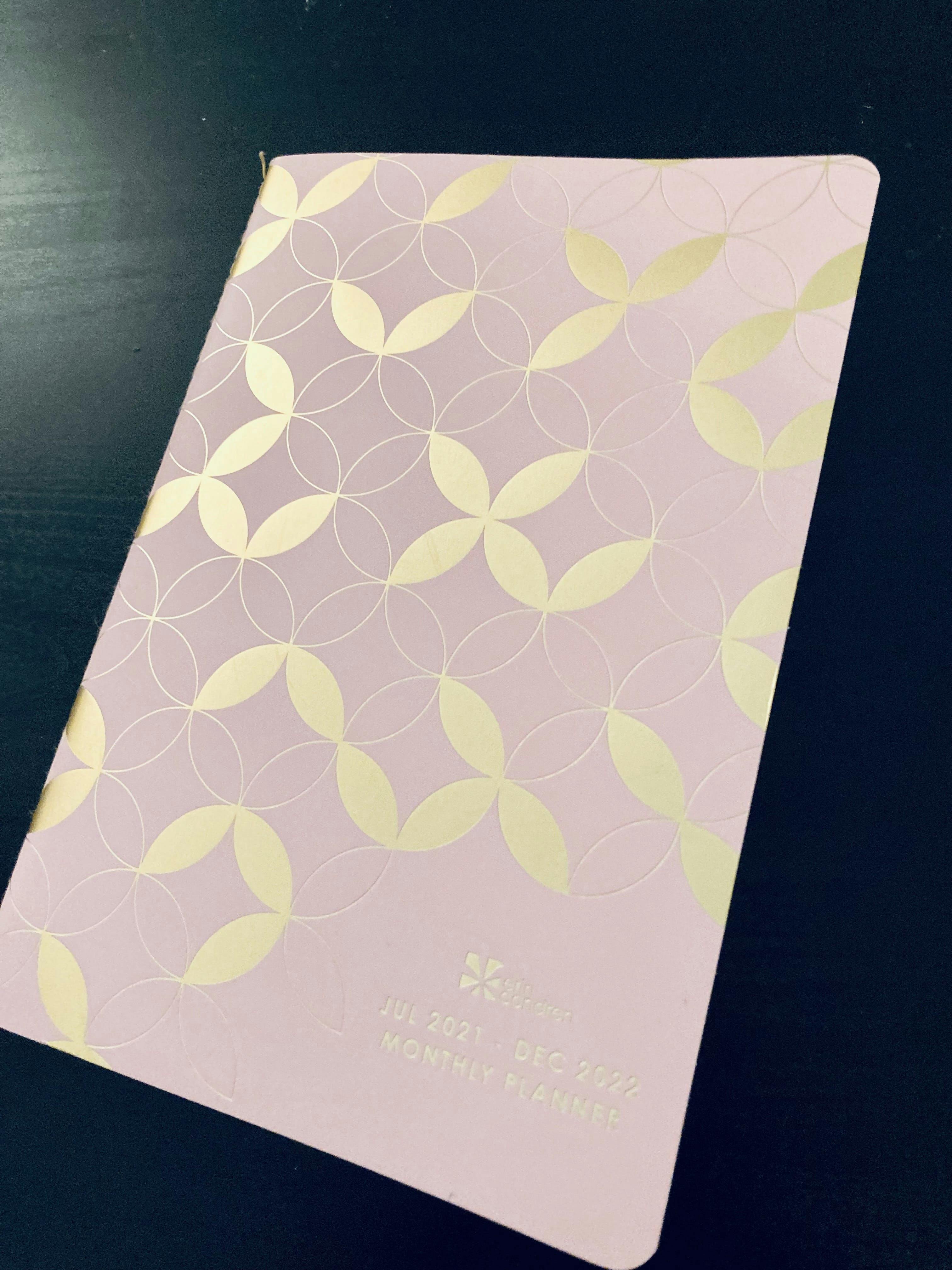
Everywhere I looked for planners, Erin Condren Design would be there. Famously, she quit her job after 9/11 and built an empire of paper products. Her LifePlanner is famous; this edition is more functional than famous.
Planner Layout
It's a straightforward monthly planner, with a typical calendar view and lots of gold embossing to go with it. Its more style over function, if you want to carry something that is bright and beautiful, this planner will work for you. Each month is 2 pages, and that’s the only view you get in this planner--the rest of the planner has notes that you can refer to. It doesn’t inccludee bookmarks, but it does include sticker packs to help you stay organized.
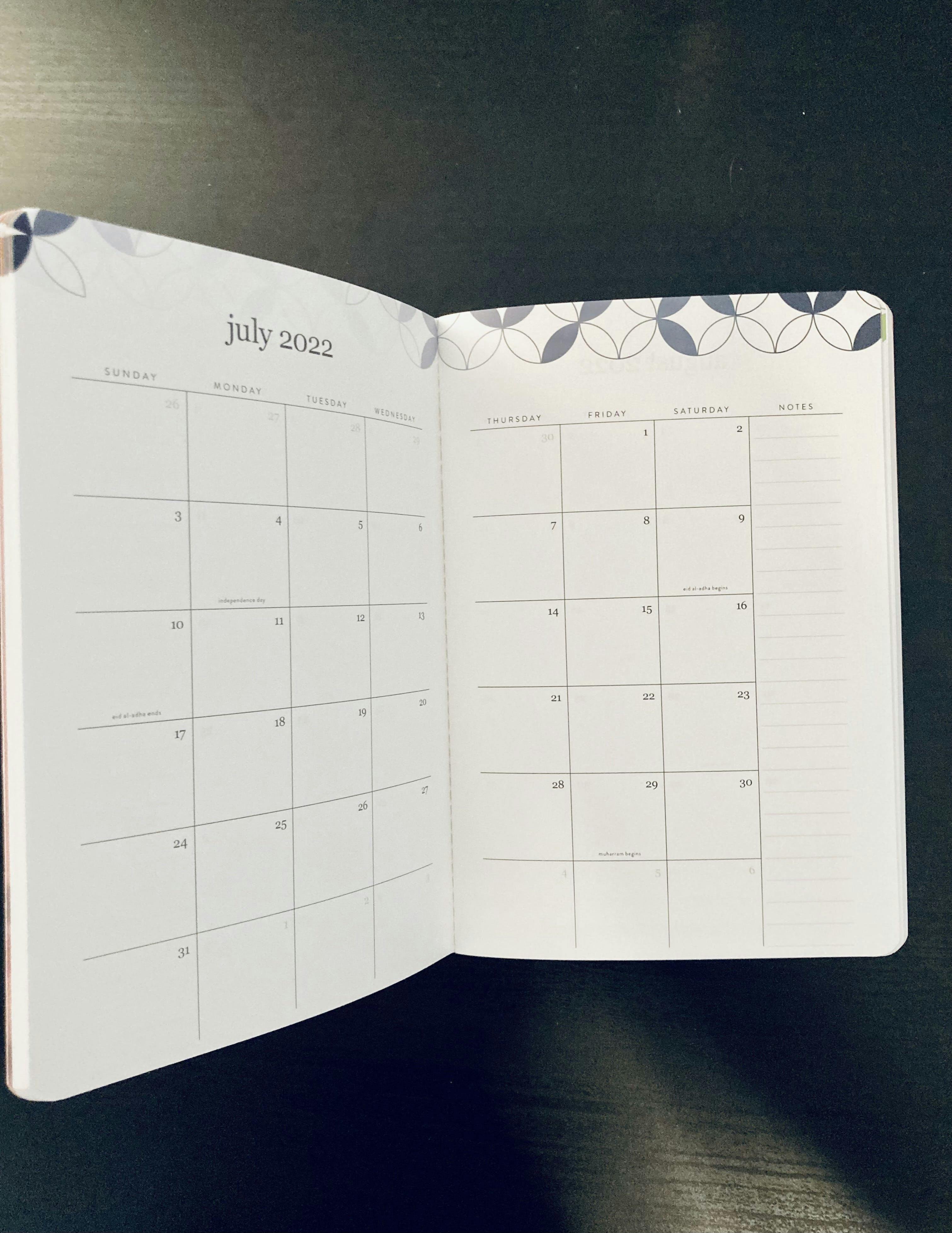
It’s very easy to make this planner your own, and its limited functionality could be a feature, not a bug. Its also very slim compared to many other planners and slides in nicely with a laptop case or messenger bag.
I do get the feeling that choosing the cover design and colors is half the fun with Erin Condren planners, and that’s great if it’s your main objective. Those accents are what’s important compared to some of the more robust features in the other planners.
That said, Erin Condren Design has a wide variety of planners. It is difficult to review them all. Other types of planners may have more complete features than this particular one. However, the cover options are more plentiful than several of the otheer planners reviewed here, making that a signature statement for anyone choosing an Erin Condren planner.
Best Features:
- Easy to reference calendar view
- Bold colors, typography, and design
- Blank pages for notes
- Slim shape and size
Cons:
- Monthly view only, no to-do lists
- No goal setting or bonus features
Size: A5 (5.8” x 8.3”)
Price: $22.50
High-Level Thoughts on Paper Planners
1. No mention of teams
These planners are laser-focused on individuals with little to no mention of team priorities and goals. But, teamwork and collaboration is how most us function, unless we are solo entrepreneurs or one-person shops. To help you get more done during your day, think about a tool that helps you check in and know what each member of your team is working on. Friday has a planner plus check-ins that integrate with a planner so you'll always know what your team is working on.
2. Goal setting is on the rise
The "traditional" planners (like Moleskine, Leuchturmm1917, Lemome) don't cover goals in the same way that the newer generation like CleverFox, Panda, and Ink+Volt do. This is a big hole in the market and these newer companies are taking advantage.
3. Planners are passive
Even if you have a great planner, you must motivated to complete your schedule and tasks each day. It won't do it for you. Even an online planner takes some work, but it can meet you halfway by pulling in your calendar events and importing tasks from Asana, Trello, ClickUp, and others. Check out all the Friday integrations.
4. The work has to be done
That said, you can also be very organized, yet still unproductive. Planners can help, but it's up to you to be productive!
How Digital Planners Help You Stay Organized
A few key points to remember about paper planners in comparison to digital planners.
Paper planners are not integrated with your calendar or task apps. If you're on a team, this is where most of your work happens, and you'll have to copy (or remember to copy!) all of your tasks and meetings over to your paper planner.
Rudimentary. Paper planners aren't dynamic--not many of them have adapted to the concerns of the modern workforce. You can see that in a few of the product shots above. The goal-setting is great, but how do they connect to your larger priorities at work?
Easy to forget to use. You can get on a roll with a paper planner, and use it for several days in a row. But what if you forget to use it? Or you leave in a hotel room?
A digital planner like ClickUp is in the cloud, so you can access it from different computers or phones. And ClickUp sends you a daily agenda notification each day to help you stay organized and on task. Your paper planner can't send reminders like that!
How ClickUp Can Be Your Company Digital HQ
ClickUp is your home for work.
ClickUp was created to bring all of your work together in one centralized work hub that can be accessed virtually anywhere—even on the go via mobile app or while browsing the web with ClickUp's Chrome Extension! And still, there is so much more ClickUp can do to take your daily planner to new heights.
Start for free (no credit card required).

